If you want to make a content marketing plan, you might not know where to start.
In this post, we’ll walk you through the entire process step by step.
But first, let’s go over some basics.
What Is a Content Marketing Plan?
A content marketing plan is a tactical blueprint that outlines all the activities, timelines, and resources you’ll use to achieve your content marketing goals, which should support your overall business goals.
In short, it’s exactly how you’ll execute your content marketing strategy. Which means content planning and strategy go hand in hand.
Why Is Content Marketing Planning Important?
Starting content marketing without having a plan is like beginning a road trip without a map. This means having a plan will help you avoid a lot of issues.
Here are some specific reasons why a content strategy plan is crucial:
- Provides clear direction. A content plan gives you a clear roadmap for executing content initiatives. This keeps your efforts focused.
- Saves time and resources. With a content plan, you can efficiently allocate time, budget, and human resources. It helps you avoid last-minute scrambling and makes the content creation process more organized.
- Ensures consistency. A plan helps you maintain a steady flow of quality content that adds value for your audience.
- Establishes clear accountability. A content plan assigns specific responsibilities to team members, making it clear who owns which tasks and deliverables.
- Improves team collaboration. When everyone knows their role and how it fits into the bigger picture, it becomes easier for team members to work together effectively and support each other's efforts.
- Makes measuring easier. With a clear plan in place, you can better track and measure the performance of your content against predetermined goals and key performance indicators (KPIs).
How to Create a Content Marketing Plan
Follow these seven steps to create your content marketing plan.
1. Review Your Content Marketing Strategy
Your content marketing strategy is the overall guide to how you’ll create and share content that reaches your target audience and helps you work toward your goals.
As you prepare your content marketing plan, focus on some key elements of your strategy.
First, review your goals. These should be specific, measurable, achievable, relevant, and time-bound (SMART).
For example, if your company offers fitness classes, your goal might be to drive website visits to increase online purchases.
The SMART version of that goal might look like this:
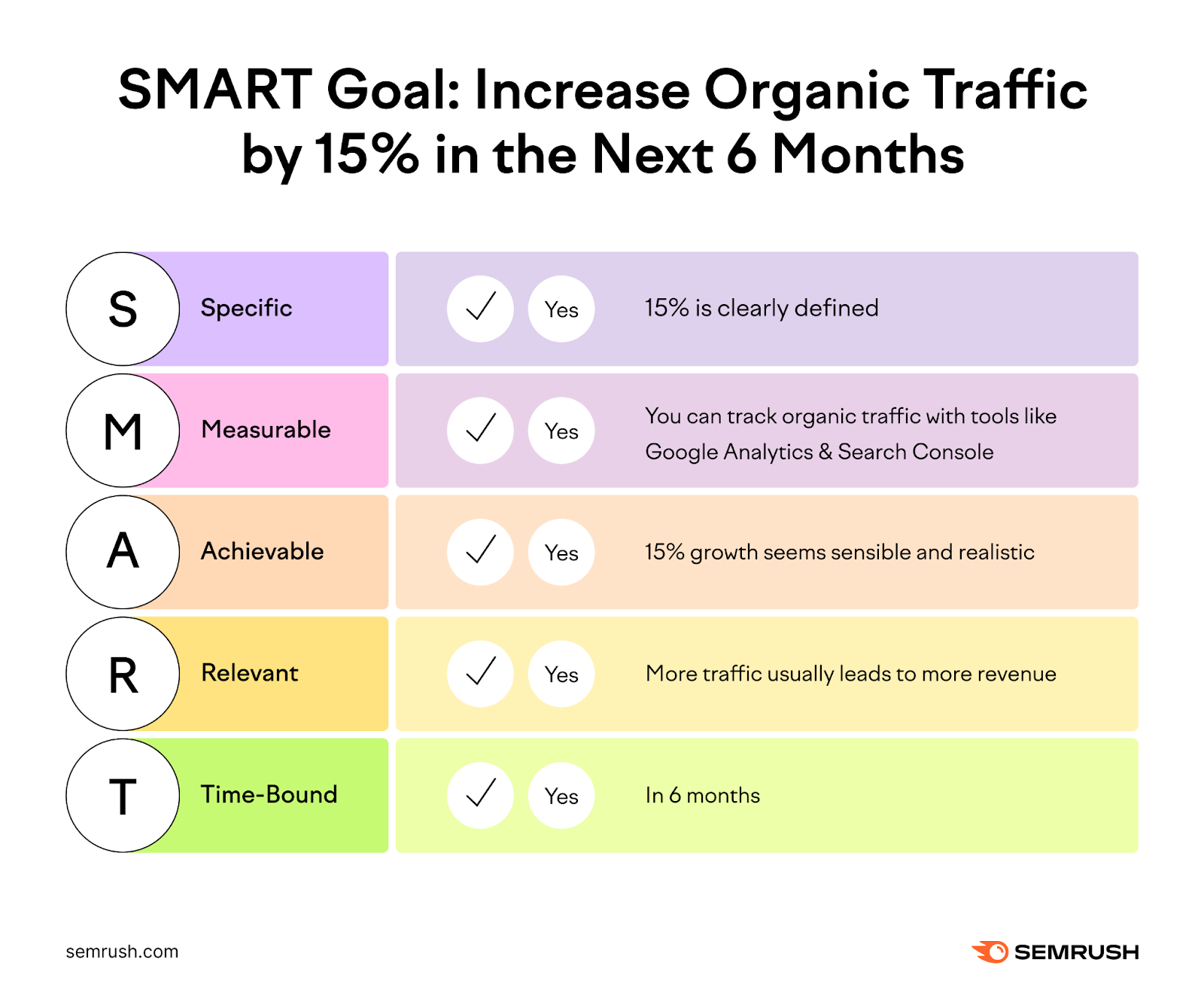
Next, take a look at the KPIs you’ve set. These should have been determined by your goals.
Using the same example, there are two main KPIs to track:
- Keyword rankings: This measures where your content ranks (appears) on search engine results pages (SERPs) for your target keywords. Higher rankings typically lead to more organic traffic, so tracking these shows if you’re effectively working toward your goal.
- Organic traffic: This is the number of visitors coming to your website from organic (unpaid) search results. An increase in this number reflects that you’re making progress toward your goal.
Finally, review your target audience details. You might have gathered these through various methods:
- Studying competitors' social media followers
- Running focus groups
- Distributing surveys
- Using online tools
If you use Semrush's One2Target to research your audience based on one or more top competitors, save your reports to easily revisit them in the future. Just click the "+ Create list" button at the top right corner.
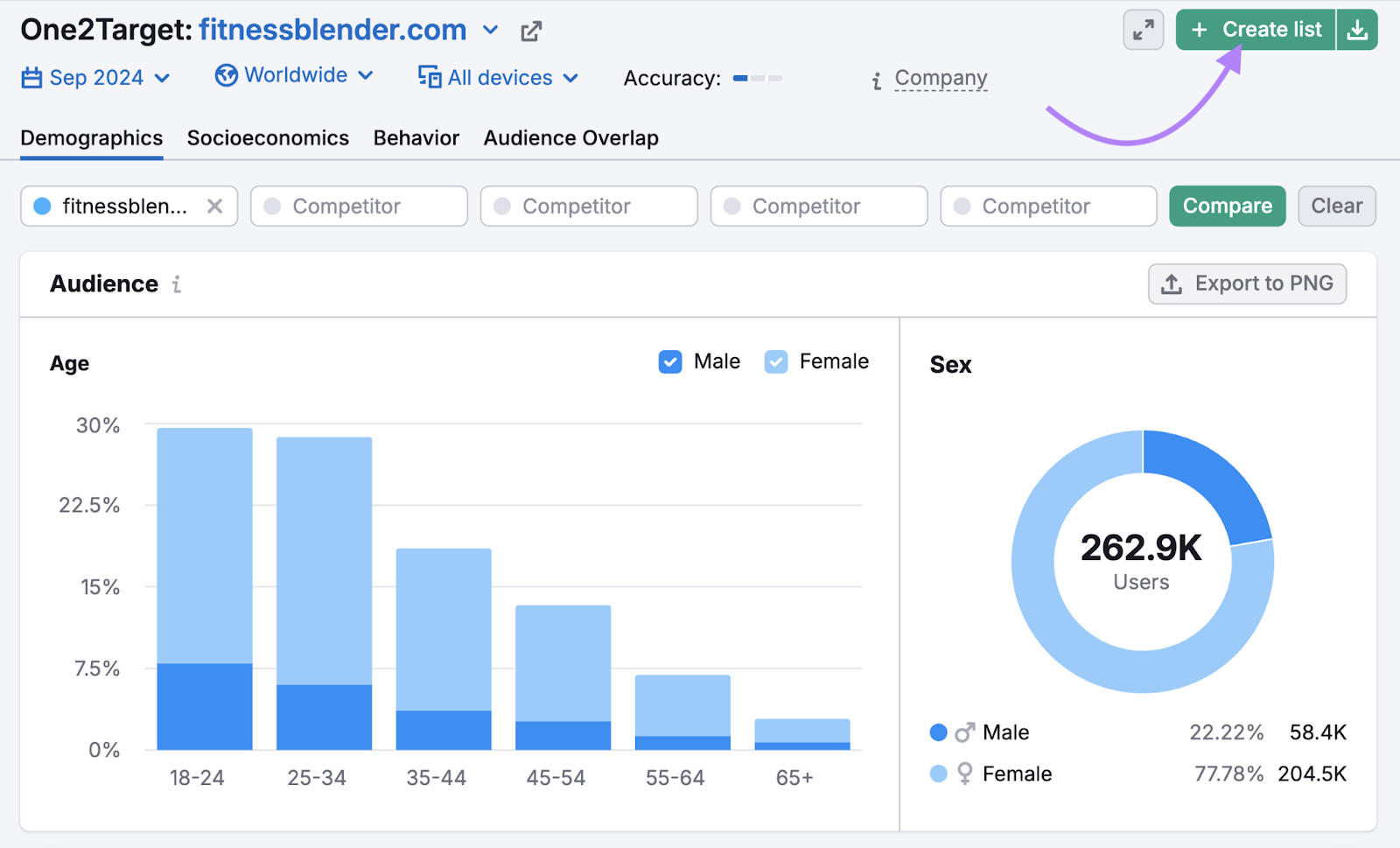
When you revisit the list, check out the "Socioeconomics" tab.
In this case, you can see that your audience primarily consists of individuals with university-level education, full-time jobs, and low incomes.
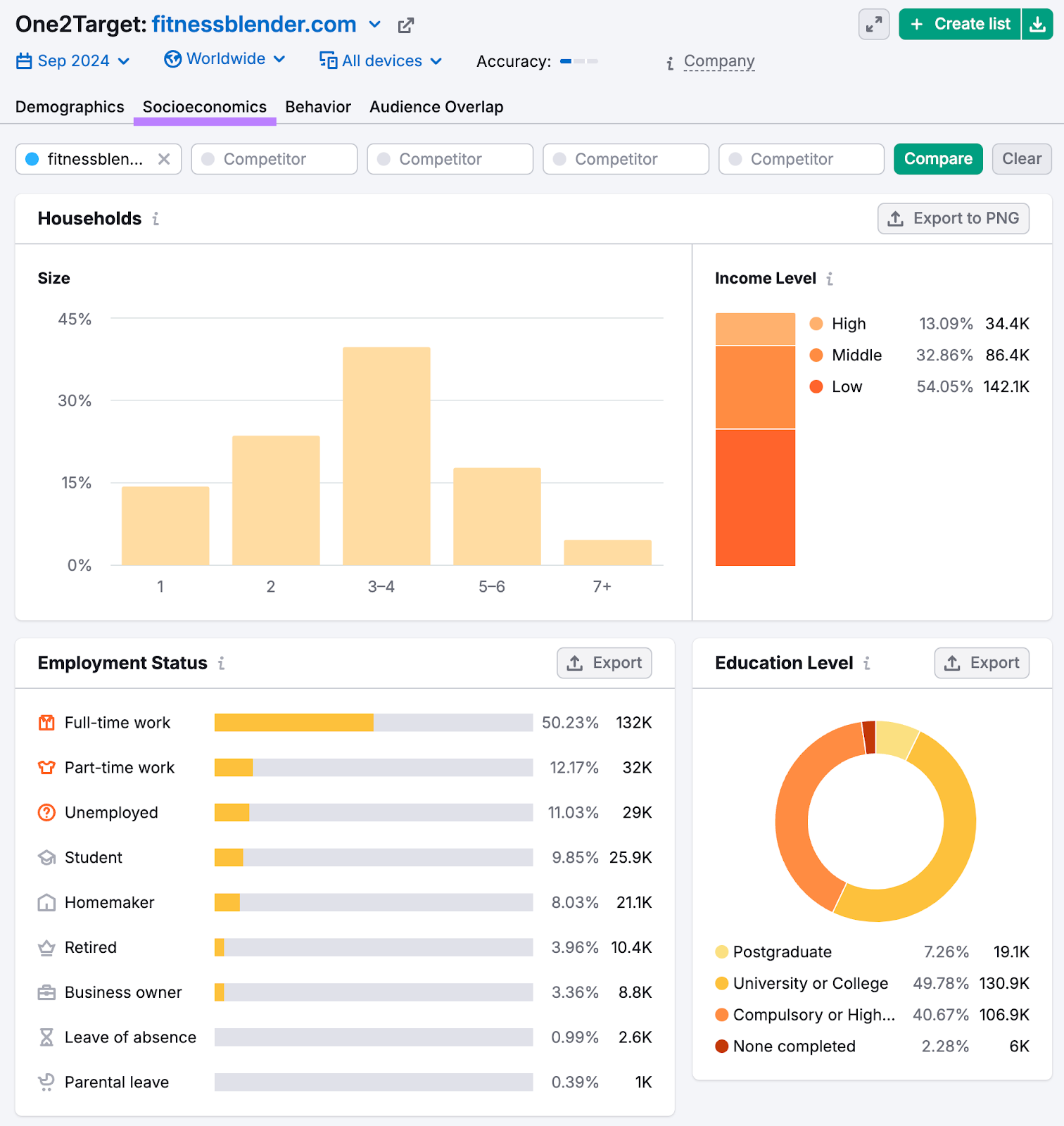
This means your content should address the challenges your audience faces—like busy schedules that make finding time to work out tough and a need for affordable fitness solutions.
You might also explore the "Behavior" tab to gain insights into their interests and preferred social media platforms.
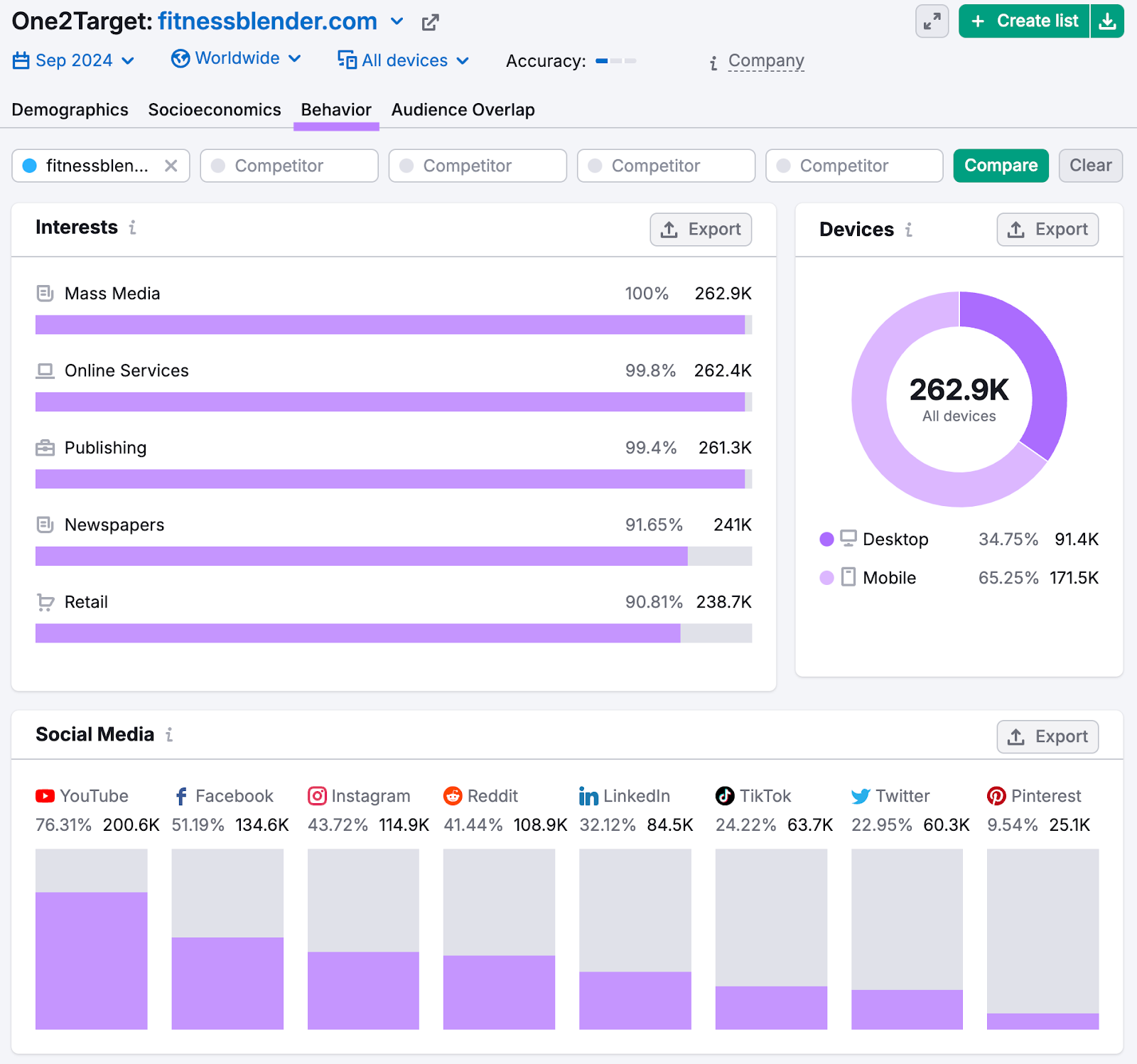
Here, you can see that your audience watches YouTube videos and spends time on Facebook, Reddit, and Instagram.
2. Choose Your Main Content Types
You’re now ready to select the types of content you’ll create that align with both your goals and your audience’s preferences.
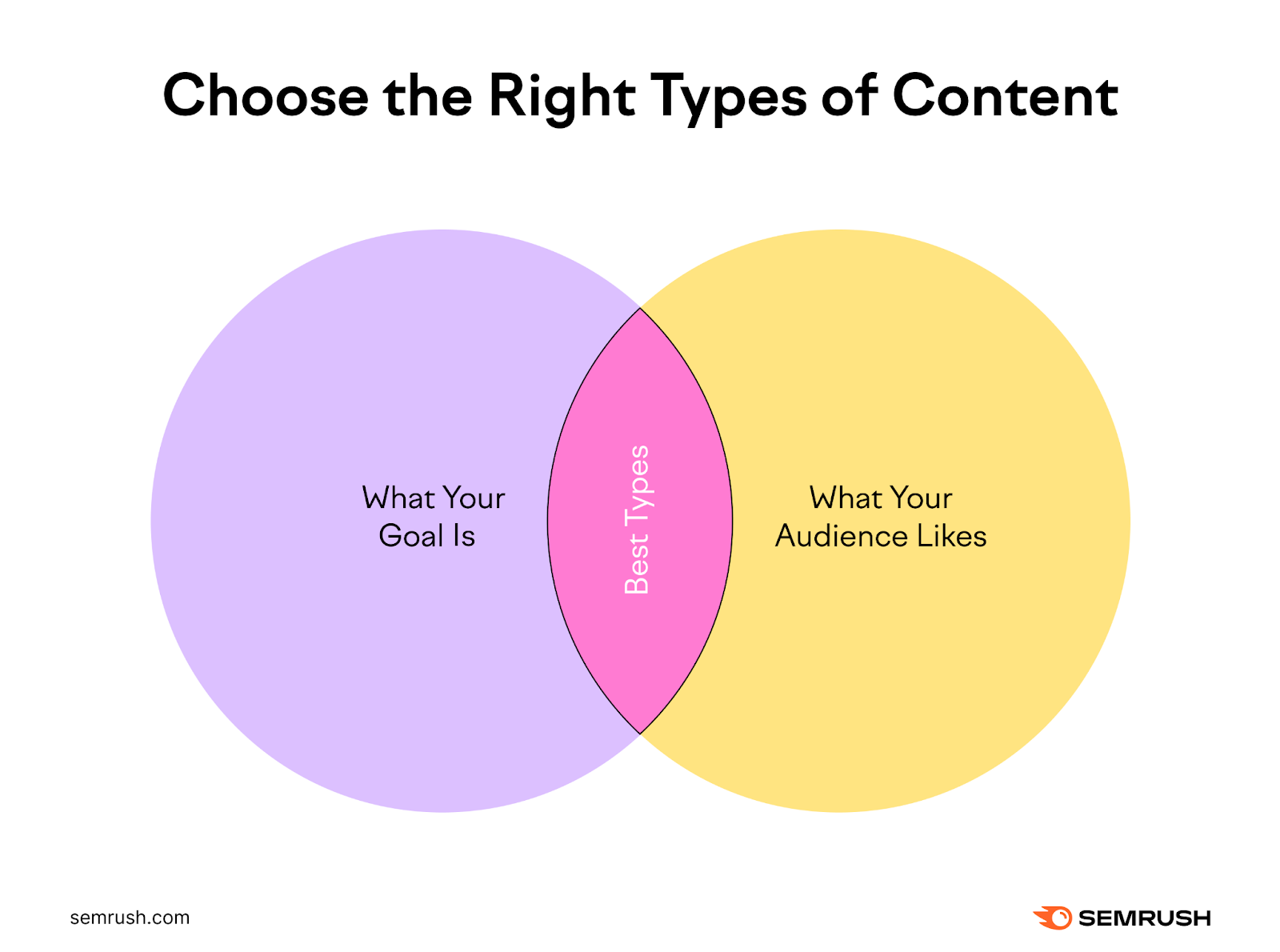
There are many potential options, including:
- Blog posts
- Videos
- Podcasts
- White papers
- Social media posts
- Infographics
- Webinars
- Ebooks
But not all of these will necessarily be right for you.
If your goal is to increase organic traffic, blog posts are a good choice due to their SEO potential.
Second, think about what your audience enjoys.
In the previous step, you saw that they like videos and other types of social content. These content pieces can familiarize people with your brand and make them more receptive to clicking your webpages when they see them in search results.
3. Pick Your Distribution Channels
Distribution channels are where you’ll share your content to reach your target audience.
They're important because the content you create won’t get discovered by your audience on its own. You'll need to promote it through various channels.
Based on what you learned about the audience for your fitness company, you might focus on:
- Publishing blog posts to your website to increase organic search visibility
- Sharing both original content and posts promoting blog posts on Instagram and Facebook
- Engaging in fitness-related subreddits to build a community and drive traffic back to your website
- Repurposing your blog content into YouTube videos
But there’s even more you can do to get eyeballs on your content. Depending on your budget and resources (which we’ll cover next), you might also consider:
- Using email marketing to share new content with your subscriber list
- Partnering with social media fitness influencers who can share your content with their followers
- Using Google Ads and/or social media advertising to boost your content's visibility
4. Determine Your Budget and Resources
Understanding what money, human resources, and tools will be available to you determines how much content you can create and how much you can rely on your different distribution channels.
Start by mapping out the team members you'll need to execute your content plan (whether in-house or freelance). Based on the content you’re going to create, you might need writers, designers, editors, and potentially video producers or social media specialists.
Next, identify the essential tools and software required for smooth execution. This might include:
- Trello (project management platform)
- Asana (project management platform)
- Semrush (content marketing platform)
Now, create a detailed budget proposal that outlines all costs associated with your resource needs and any additional expenses like paid promotion.
Present this comprehensive budget to your stakeholders. They'll either approve it or (more likely) request adjustments.
Once you have your final budget, you can make informed decisions about hiring and adjust your content plans accordingly.
For example, you may need to adjust your plans to hire in-house writers to instead work with freelancers. Which is typically more affordable.
5. Identify the Right Topics
Choosing the right topics is crucial for your content plan's success. Otherwise, you’ll end up creating content on topics that your audience doesn’t care about.
If your main content type is SEO-focused blog posts, you need to create content on topics people are actively searching for in search engines like Google.
Here’s how to find these topics:
Head over to Semrush’s Keyword Magic Tool,
Enter a seed keyword (a broad term) related to your industry, add your domain name, and click “Search.”
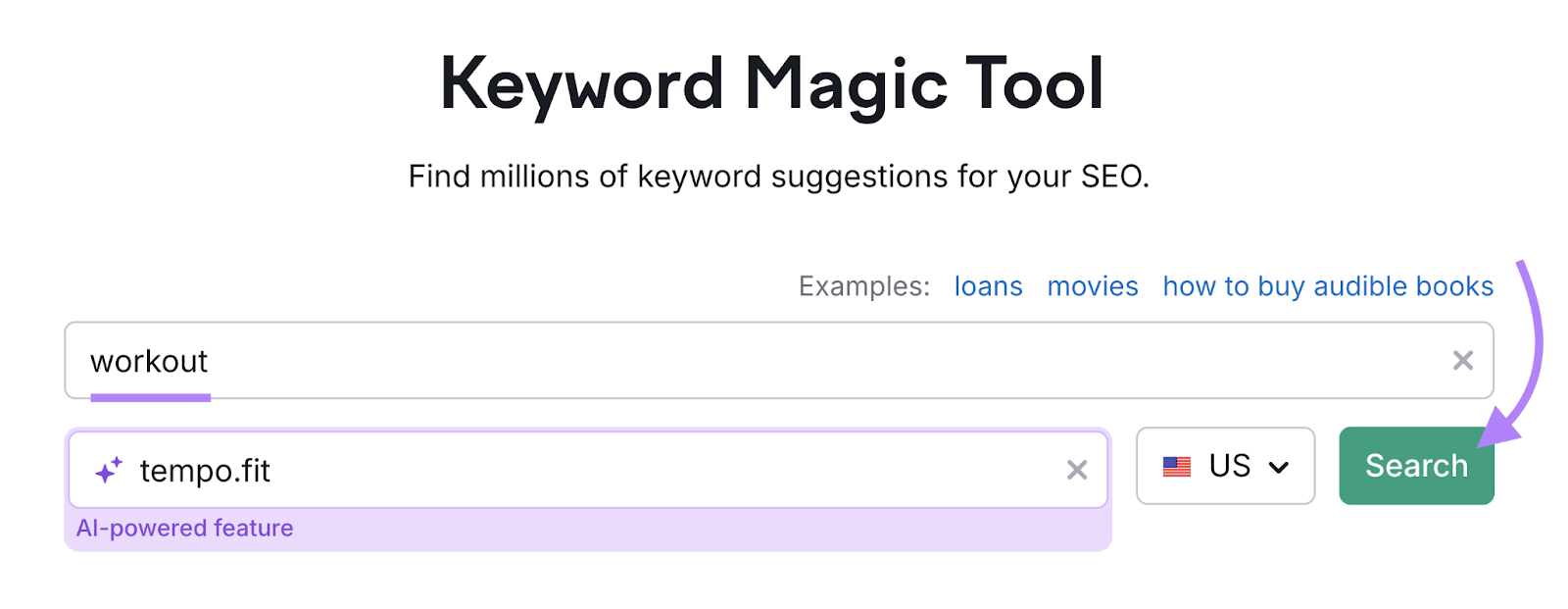
Here, you’ll see lots of keywords along with their search volumes—how often people search for them each month.
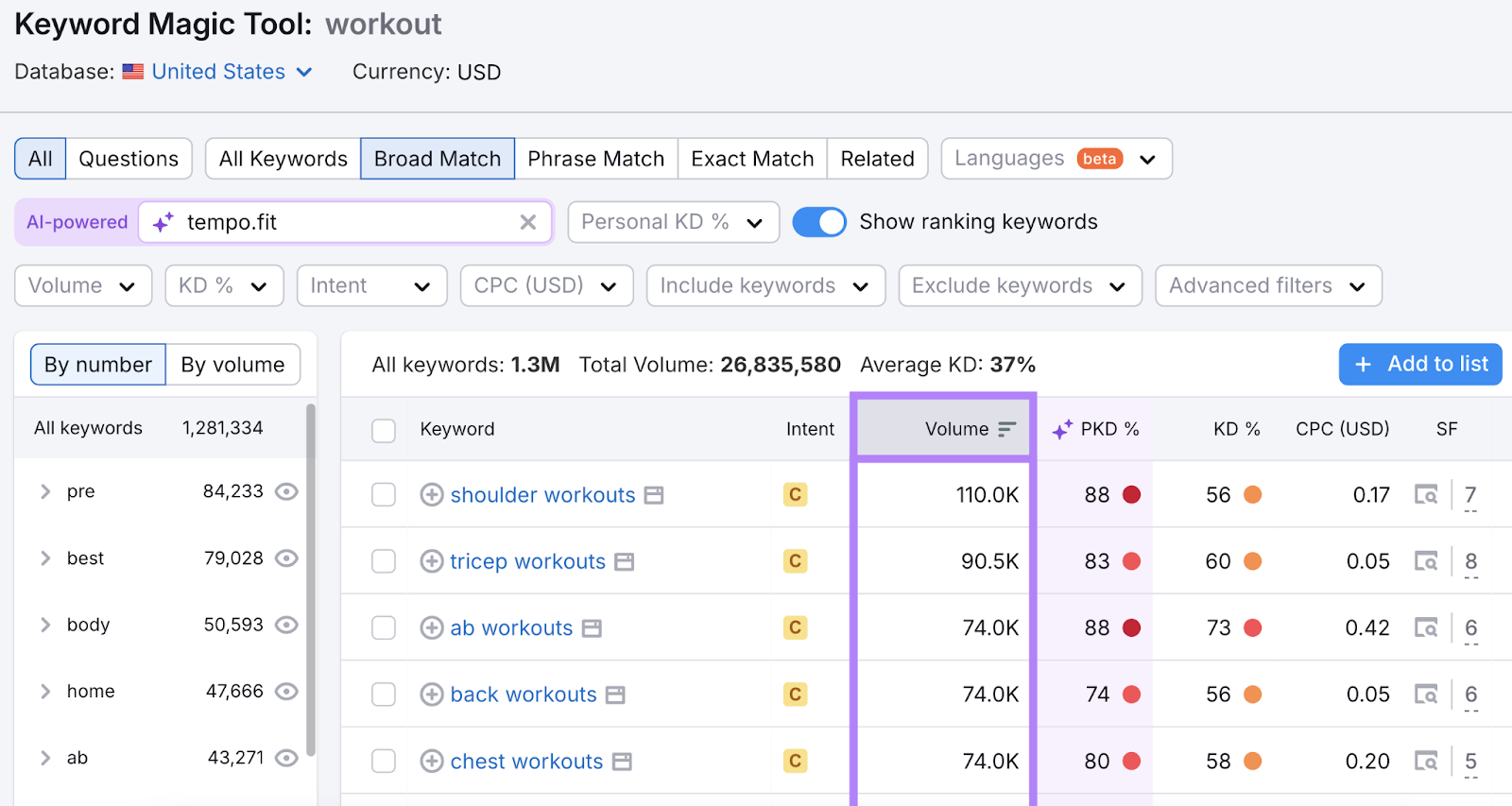
This is a huge list, so you need to narrow this down using some filters. Specifically, these two:
- Search intent (Intent): This is the reason behind a user's search query. For blog content, it’s typically best to focus on informational queries—terms users search for when they want to learn something.
- Personal keyword difficulty (PKD %): PKD is a score that shows how difficult it would be for your specific website to rank in the top 10 results for a given topic. The lower the number, the easier it is. So, focus on keywords with the lower PKD scores. Anything below 30% is generally a good target.
After applying these filters, you'll get a list of more promising topics:
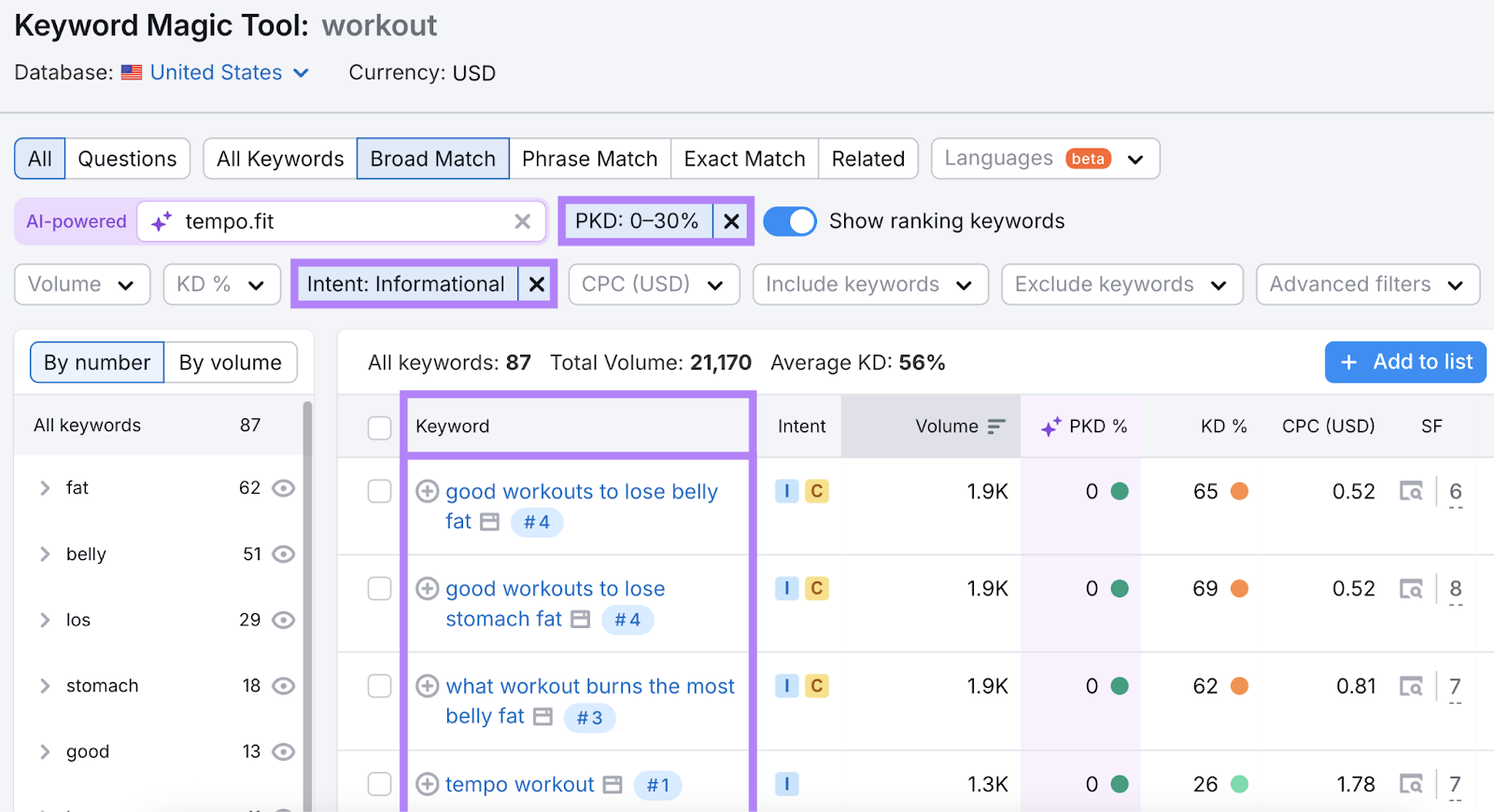
Browse this list and select all the terms you want to create content around.
Repeat this process using additional seed terms to build out your list even more.
You’ll then want to prioritize keywords that seem most important, so you can work within your budget and resource limitations.
6. Set Up Your Content Calendar
A content calendar is a centralized place where you can assign content pieces to team members, track the current status of each piece, and set deadlines.

Planning everything in advance using a content calendar keep things organized and ensures you’re publishing consistently. To achieve your content goals.
You can create a content calendar using simple spreadsheets or more specialized software like Trello or Asana.
There are no strict rules for what your calendar should include—just focus on what you and your team need to know to stay on track.
Typically, content teams include the:
- Content title or topic
- Content type (blog post, video, infographic, etc.)
- Target keyword—if applicable
- Owner or author
- Due date
- Publication date
- Additional distribution channels (as needed)
When planning your calendar, think about how often you’ll publish new content.
Your publishing frequency should align with your content goals but also be realistic based on your budget and available resources.
Start by setting a realistic weekly publishing target. And then plan the rest of the month or quarter accordingly.
7. Measure Your KPIs
Since you already defined your KPIs, the focus now should be on setting up a system for reporting on them to understand how your content is performing and whether you're moving toward your goals.
Decide how often you'll check your performance. This could be weekly or monthly.
Then, decide how to measure your KPIs. Which we determined were keyword rankings and organic traffic.
You can use Google Analytics to track organic traffic. To get started, sign in to your Google Analytics account and head to the “Reports” tab.

From there, click on "Engagement" and select "Landing page" from the options that appear.
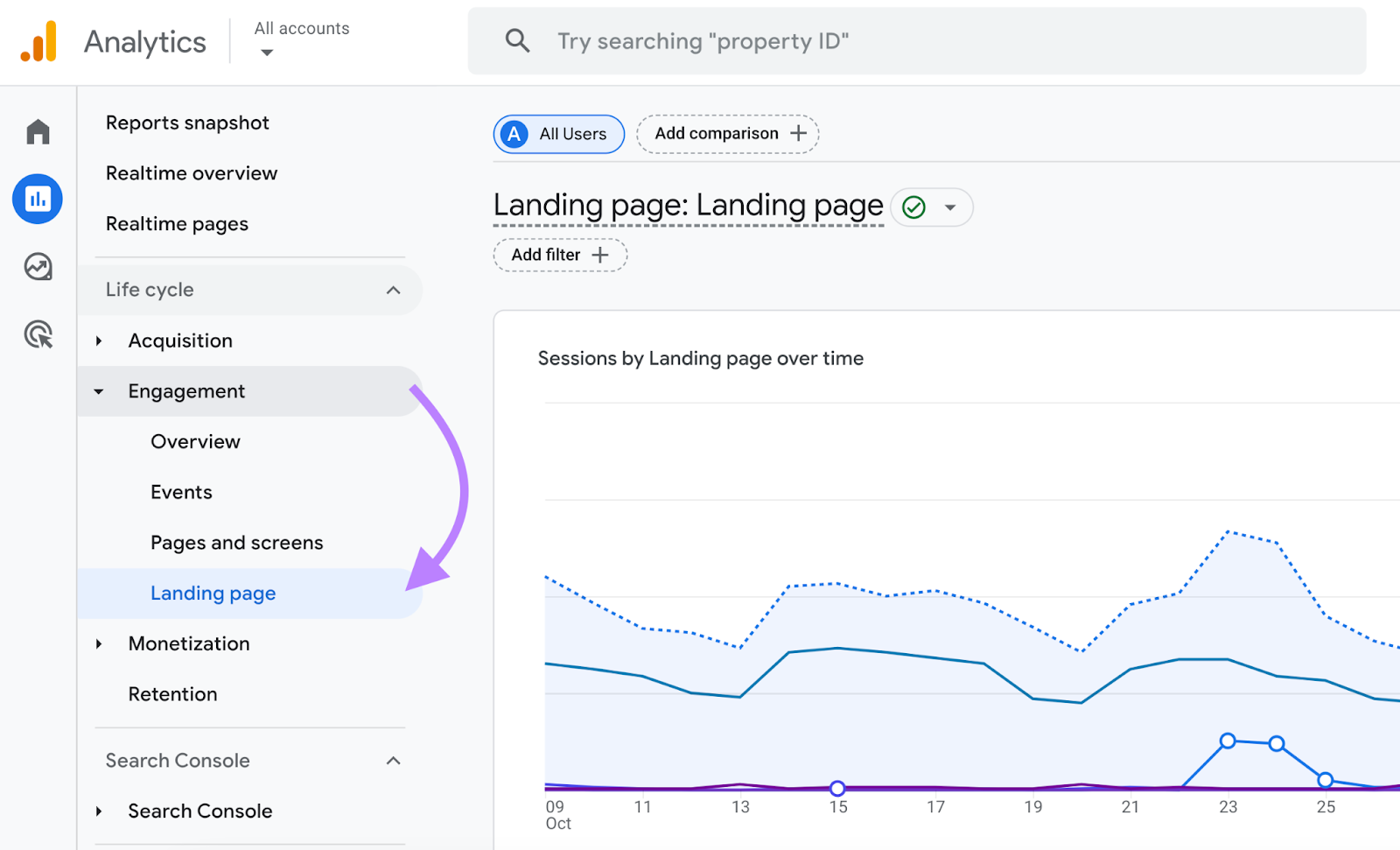
Next, you'll want to customize your report. Look to the top-right corner where you can set your desired time period, like last 7 days, 28 days, or any custom range you prefer.
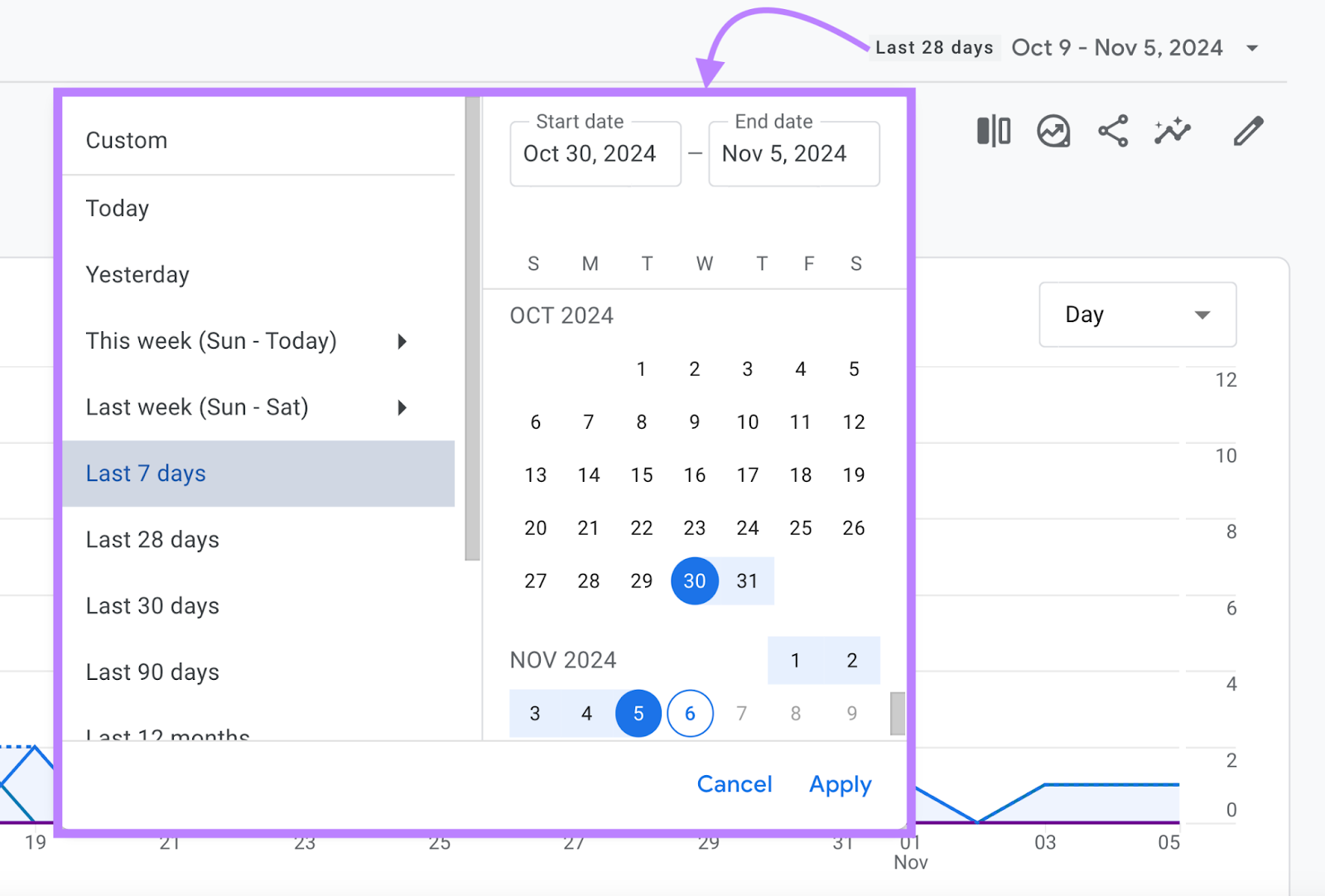
Once you've set your dates, click the "Add filter +" button near the top-center of your screen and set it up this way:
- Dimension: Session default channel group
- Match Type: Exactly matches
- Value: Organic Search
After entering these settings, click "Apply."
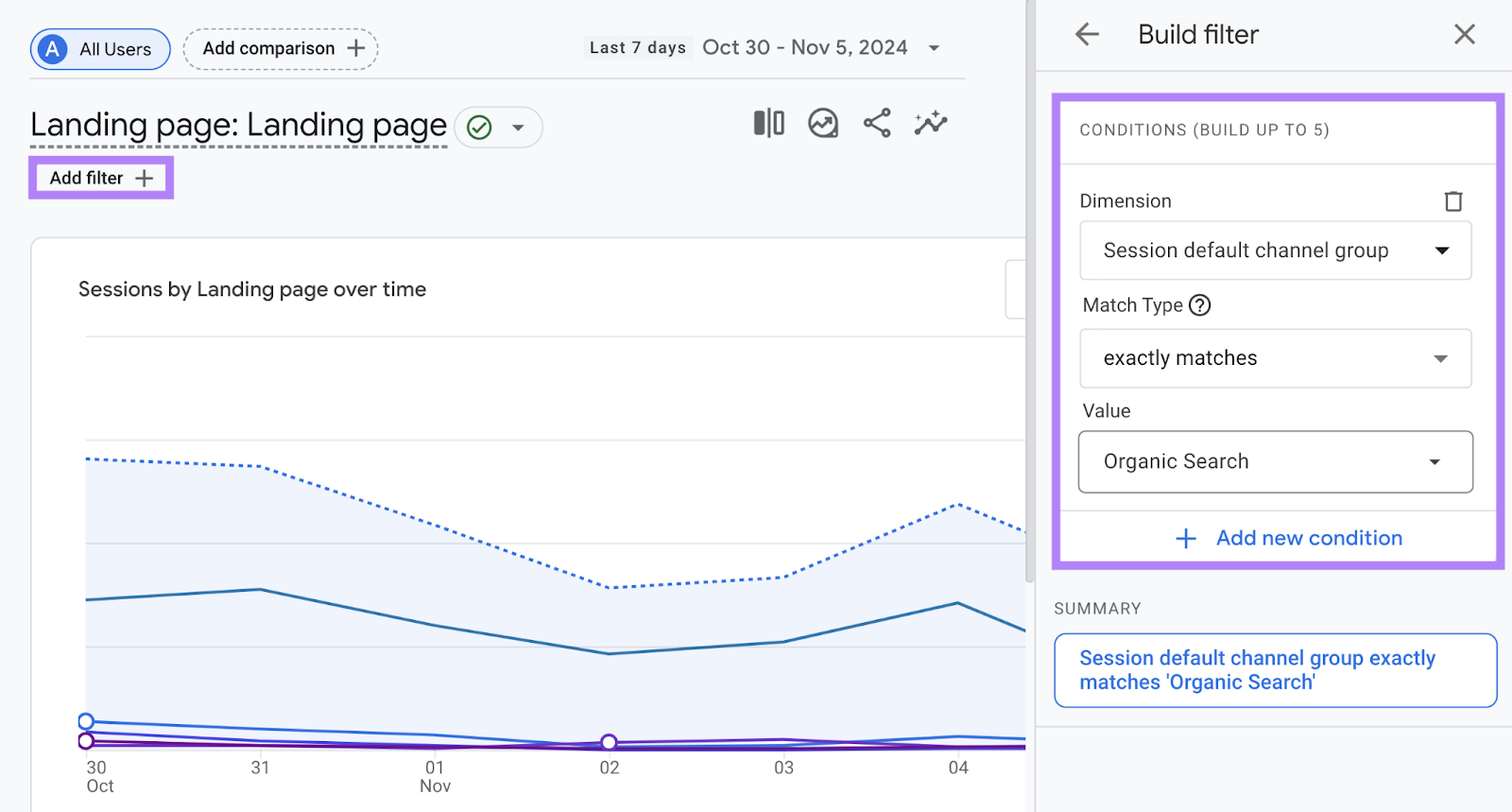
Your screen will now update to reflect the organic traffic each of the listed pages gets.
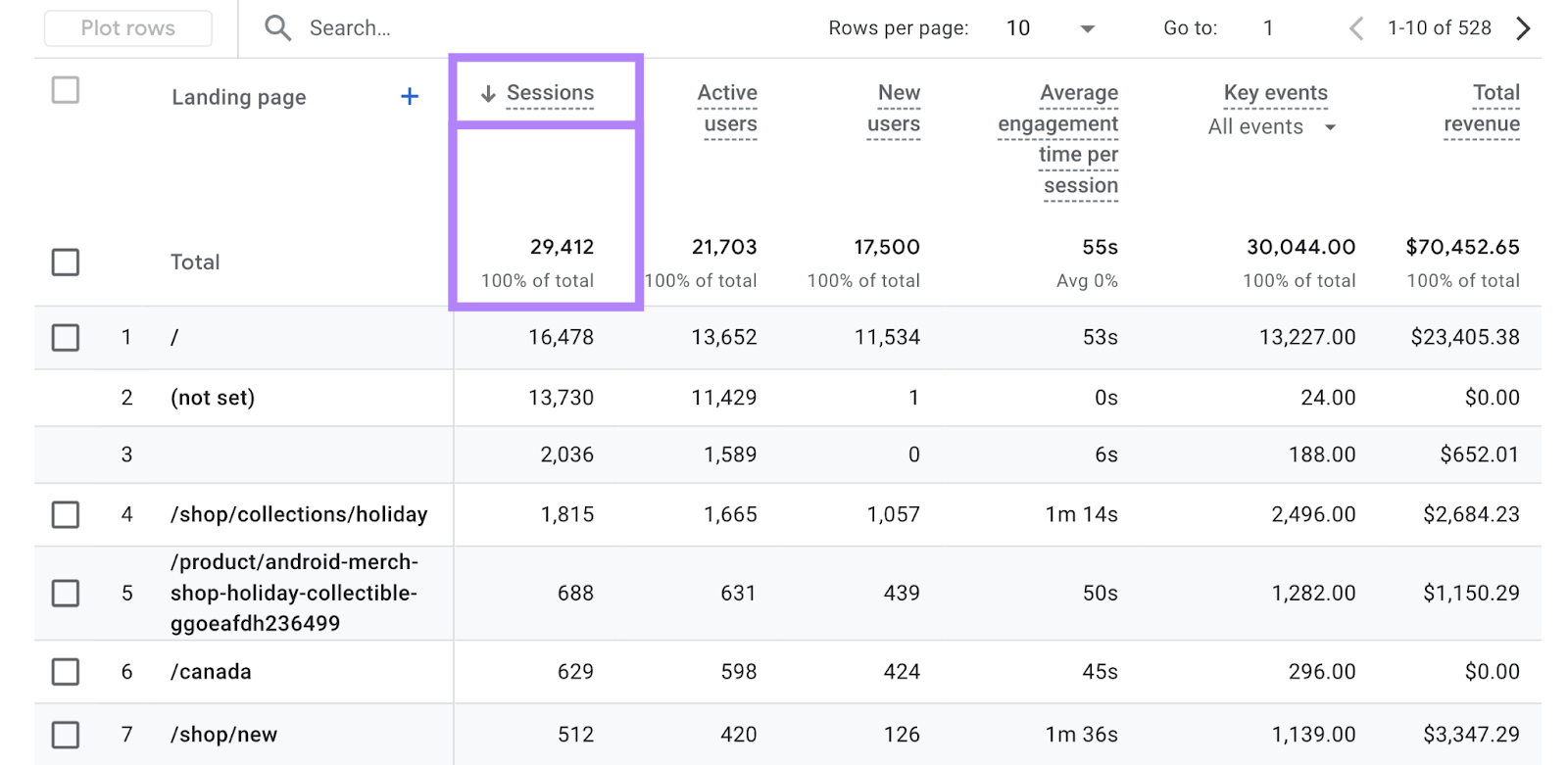
You can also schedule this report to be emailed to your team automatically at your preferred intervals.
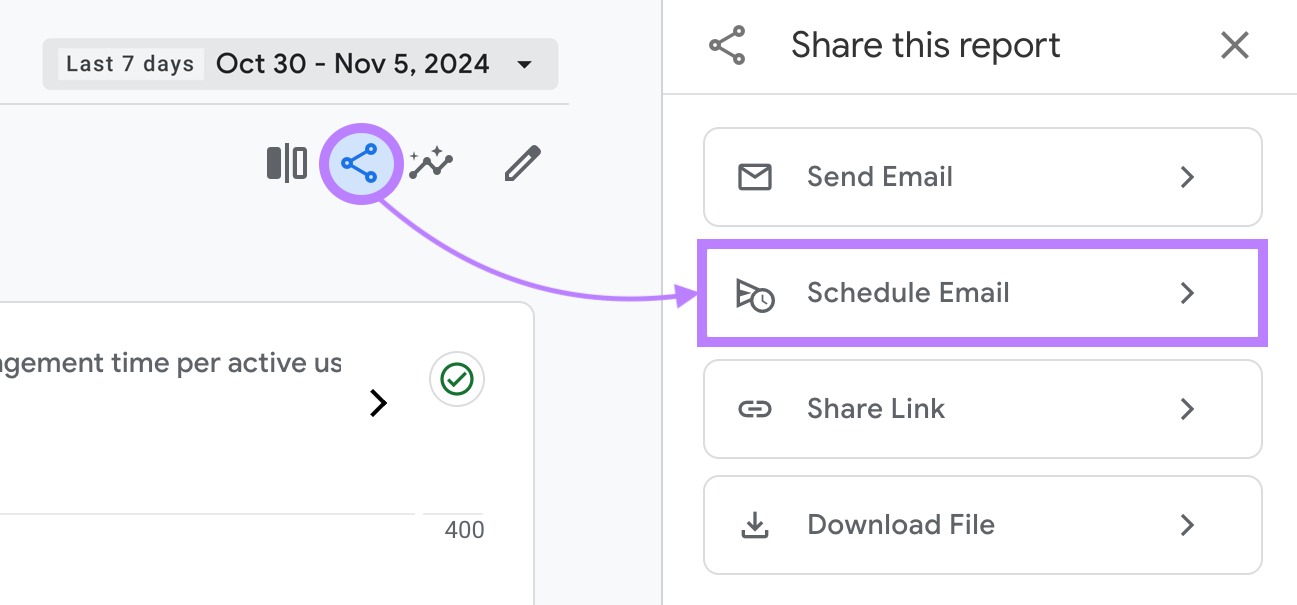
For keeping an eye on keyword rankings, use Semrush’s Position Tracking tool.
To get started, open the tool, enter your domain name, and click “Set up tracking. “
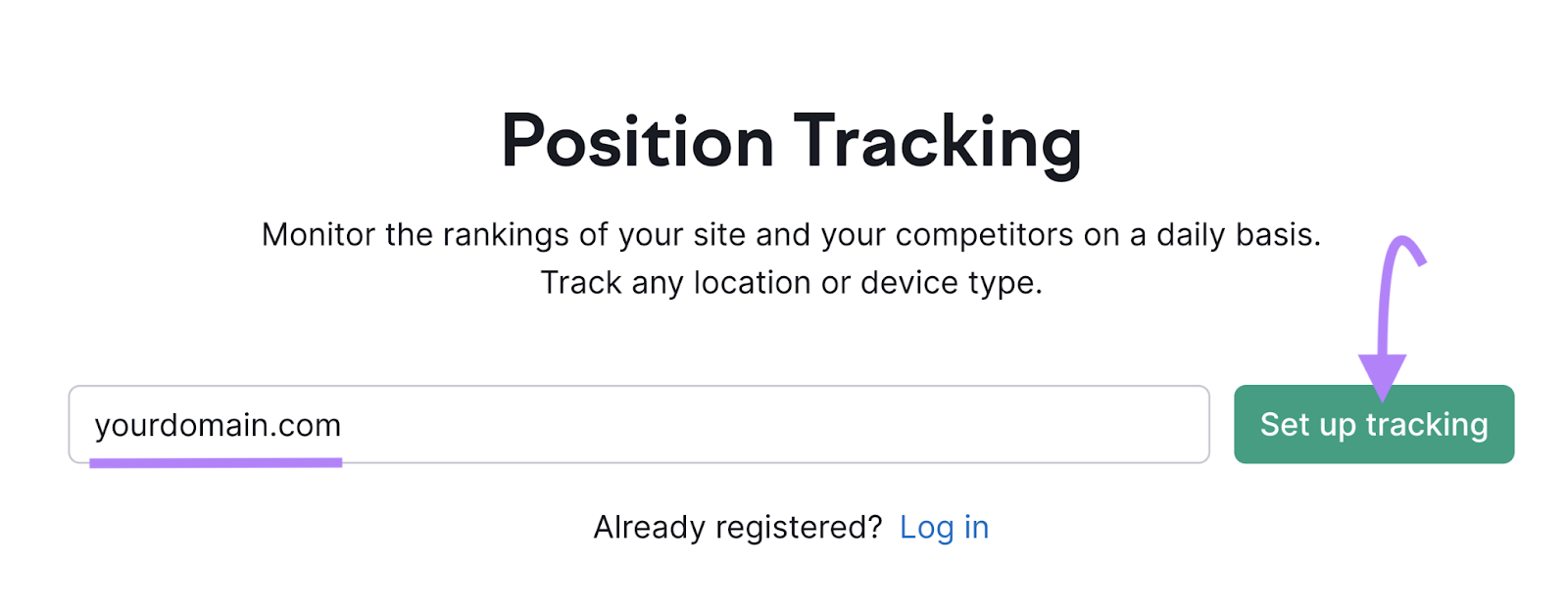
Follow the prompts to select a search engine, choose your location, add your keywords, etc. When the tool is done gathering data, go to the “Overview” tab. You’ll be able to see your keyword rankings in the “Rankings Overview” table.
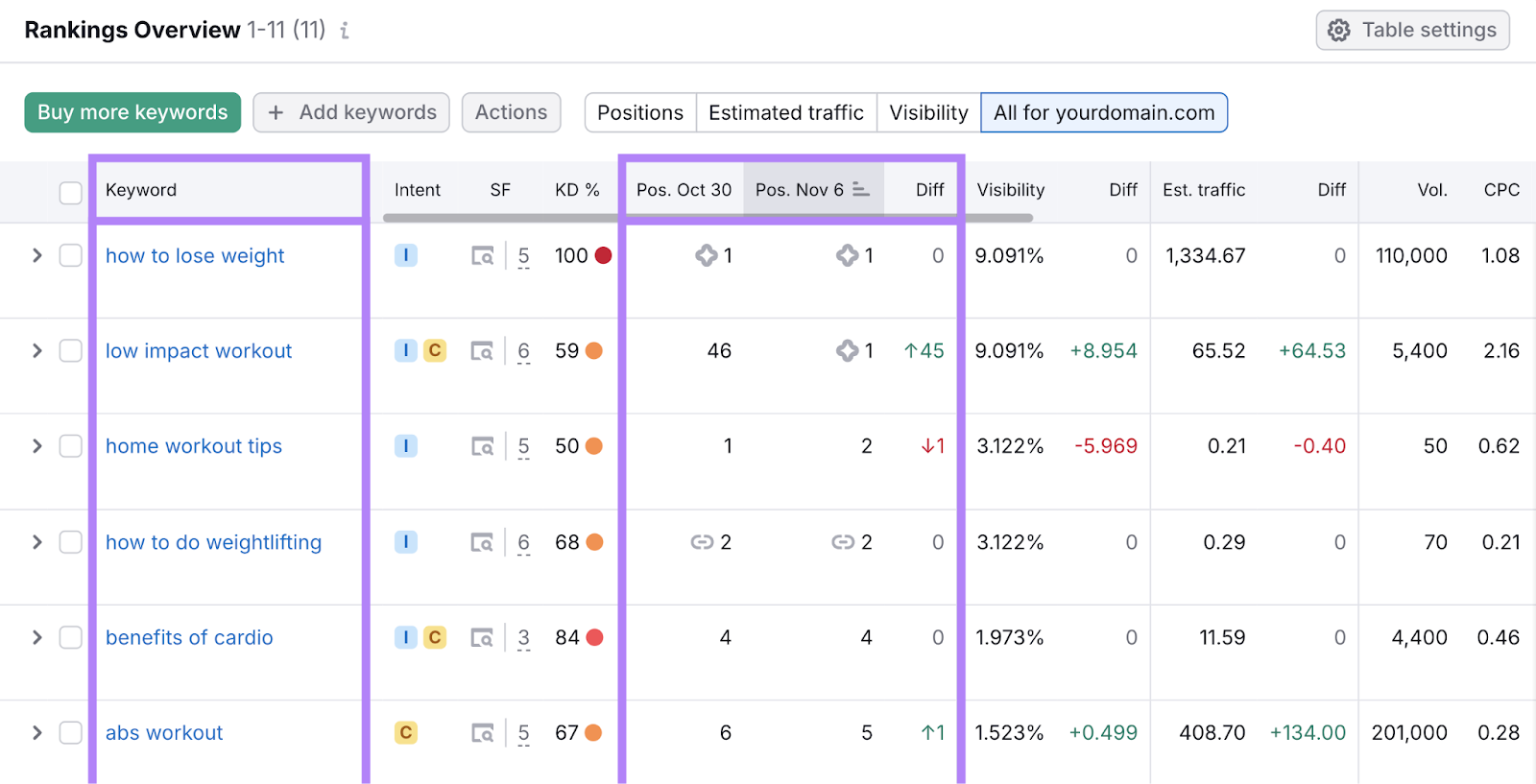
You can also see how your rankings have changed since the last period. Which helps you understand whether you’re making progress that could lead to more organic traffic.
Create Your Content Marketing Plan Today
Creating a content plan is quite a comprehensive process.
But you should definitely take the time to build one. It will help you stay organized and will increase your chance of meeting your goals.
Semrush tools give you the insights and data you need to make informed decisions during the content planning and strategy process.
Sign up to try them today.
